Related Research Articles
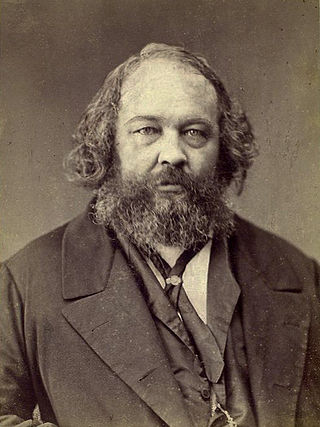
Mikhail Alexandrovich Bakunin was a Russian revolutionary anarchist. He is among the most influential figures of anarchism and a major figure in the revolutionary socialist, social anarchist, and collectivist anarchist traditions. Bakunin's prestige as a revolutionary also made him one of the most famous ideologues in Europe, gaining substantial influence among radicals throughout Russia and Europe.

Errico Malatesta was an Italian anarchist propagandist and revolutionary socialist. He edited several radical newspapers and spent much of his life exiled and imprisoned, having been jailed and expelled from Italy, Britain, France, and Switzerland. Originally a supporter of insurrectionary propaganda by deed, Malatesta later advocated for syndicalism. His exiles included five years in Europe and 12 years in Argentina. Malatesta participated in actions including an 1895 Spanish revolt and a Belgian general strike. He toured the United States, giving lectures and founding the influential anarchist journal La Questione Sociale. After World War I, he returned to Italy where his Umanità Nova had some popularity before its closure under the rise of Mussolini.
Propaganda of the deed is specific political direct action meant to be exemplary to others and serve as a catalyst for revolution.
Anarchism in Spain has historically gained some support and influence, especially before Francisco Franco's victory in the Spanish Civil War of 1936–1939, when it played an active political role and is considered the end of the golden age of classical anarchism.

Giuseppe Fanelli was an Italian revolutionary anarchist, best known for his tour of Spain in 1868, introducing the anarchist ideas of Mikhail Bakunin.
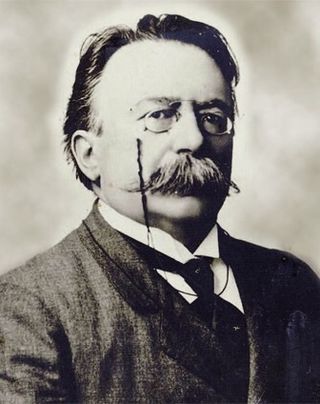
Andrea Costa was an Italian politician who was initiated on September 25, 1883 to the Masonic Lodge "Rienzi" in Rome and progressively become 32nd-degree Mason and adjunctive Great Master of the Grande Oriente of Italy.
According to different scholars, the history of anarchism either goes back to ancient and prehistoric ideologies and social structures, or begins in the 19th century as a formal movement. As scholars and anarchist philosophers have held a range of views on what anarchism means, it is difficult to outline its history unambiguously. Some feel anarchism is a distinct, well-defined movement stemming from 19th-century class conflict, while others identify anarchist traits long before the earliest civilisations existed.

The Jura Federation represented the anarchist, Bakuninist faction of the First International during the anti-statist split from the organization. Jura, a Swiss area, was known for its watchmaker artisans in La Chaux-de-Fonds, who shared anti-state, egalitarian views on work and social emancipation. The Jura Federation formed between international socialist congresses in 1869 and 1871. When the First International's General Council, led by Marxists, suppressed the Bakuninists, the Jura Federation organized an international of the disaffected federations at the 1872 St. Imier Congress. The congress disavowed the General Council's authoritarian consolidation of power and planning as an affront to the International's loose, federalist founding to support workers' emancipation. Members of the First International agreed and even statists joined the anti-statists' resulting Anti-authoritarian International, but by 1876, the alliance had mostly dissolved. While in decline, the Jura Federation remained the home of Bakuninists whose figures engaged on a two-decade debate on the merits of propaganda of the deed. The egalitarian relations of the Jura Federation had played an important role in Peter Kropotkin's adoption of anarchism, who became the anarchist standard-bearer after Bakunin.
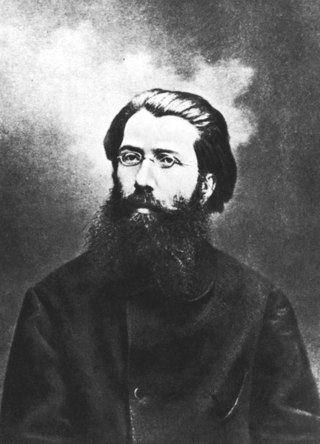
Carlo Cafiero was an Italian anarchist that led the Italian section of the International Workingmen's Association (IWA). An early leader of the Marxist and anarchist communist movements in Italy, he was a key influence in the development of both currents.

The Biennio Rosso was a two-year period, between 1919 and 1920, of intense social conflict in Italy, following the First World War. The revolutionary period was followed by the violent reaction of the fascist blackshirts militia and eventually by the March on Rome of Benito Mussolini in 1922.

Anarchism in Mexico, the anarchist movement in Mexico, extends from Plotino Rhodakanaty's organization of peasant workers in the 1890s, to Ricardo Flores Magón's activism prior to the Mexican Revolution, to the punk subcultures of the 1990s.
Anarchism in Russia developed out of the populist and nihilist movements' dissatisfaction with the government reforms of the time.
Italian anarchism as a movement began primarily from the influence of Mikhail Bakunin, Giuseppe Fanelli, and Errico Malatesta. Rooted in collectivist anarchism and social or socialist anarchism, it expanded to include illegalist individualist anarchism, mutualism, anarcho-syndicalism, and especially anarcho-communism. In fact, anarcho-communism first fully formed into its modern strain within the Italian section of the First International. Italian anarchism and Italian anarchists participated in the biennio rosso and survived Italian Fascism, with Italian anarchists significantly contributing to the Italian Resistance Movement. Platformism and insurrectionary anarchism were particularly common in Italian anarchism and continue to influence the movement today. The synthesist Italian Anarchist Federation appeared after the war, and autonomismo and operaismo especially influenced Italian anarchism in the second half of the 20th century.

Emilio Covelli (1846–1915) was an Italian anarchist and socialist who together with Carlo Cafiero was one of the most important figures in the early socialist movement in Italy, a member of the International Workingmen's Association, or "First International". He lived in exile in Paris for a while, returning to Italy for reasons of health, and dying in the psychiatric hospital in Nocera Inferiore.

La Plebe was an Italian newspaper that was published in Lodi from 1868 to 1875, then in Milan from 1875 to 1883. The editor was Enrico Bignami.
Lodovico Nabruzzi was an Italian journalist and anarchist. He played a leading role in the dissensions between the revolutionary and evolutionary Italian socialists. He spent several years in exile in Switzerland and France, often forced to undertake menial work and often in trouble with the authorities. After returning to Italy his life continued to be difficult, and he suffered from mental health problems. Although he married and had four children the marriage did not last. He died alone in a public hospital.
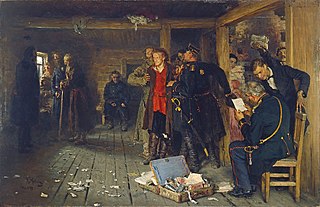
Going to the People was a populist movement in the Russian Empire. It was largely inspired by the work of Russian theorists such as Mikhail Bakunin and Pyotr Lavrov, who advocated that groups of dedicated revolutionaries could inspire a mass movement to overthrow the ruling class, especially as it concerned the peasantry. The anarchist Peter Kropotkin called the experience "the mad summer of 1874".
Anarchism in Armenia emerged as part of the Armenian national liberation movement, with its roots in various heretical Christian sects that practiced in the region. It took on an organized form with the establishment of the Armenian Revolutionary Federation in 1890, before being suppressed by the various empires and authoritarian regimes that ruled over Armenia during the 20th century. It eventually re-emerged in the 21st century, as part of the anti-establishment movement that spread throughout the country in the wake of its independence.
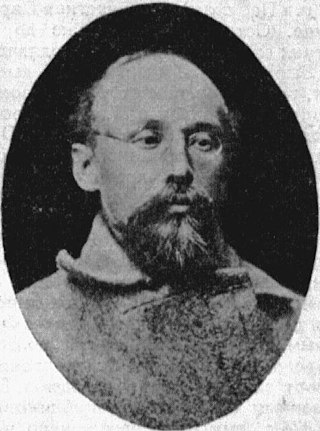
Mikhail Petrovich Sazhin, also known by the pseudonym Armand Ross, was a Russian revolutionary anarchist. An activist during his years as a student, he was expelled and exiled for his revolutionary activities, forcing him to flee the country to Switzerland, where he became a disciple of the anarchist Mikhail Bakunin. During the 1870s, he participated in a series of uprisings, including those of the Lyon and Paris Communes, the 1874 Bologna insurrection and Herzegovina uprising, before returning to Russia in order to ignite an insurrection there. He was arrested for smuggling revolutionary literature across the border and tried as part of the Trial of the 193, which resulted in him getting exiled to Siberia. He spent the subsequent decades working in a number of steamship companies throughout Russia, eventually returning to European Russia and participating in a number of radical publishing ventures. He spent his final years in Moscow, attempting to publish Bakunin's literary works and working as an activist for the Society of Former Political Prisoners and Exiled Settlers.

Olimpiada Evgrafovna Kutuzova, also known as Olimpia Kutuzova Cafiero, was a Russian Narodnik. Facing arrest for her revolutionary activities, she married the Italian anarchist Carlo Cafiero in order to seek political asylum abroad. After a year in exile, she returned to Russia, where she educated peasant children and participated in the Going to the People movement, which brought her again to the attention of authorities.
References
- ↑ Drake 2009, p. 35.
- 1 2 3 Drake 2009, p. 36.